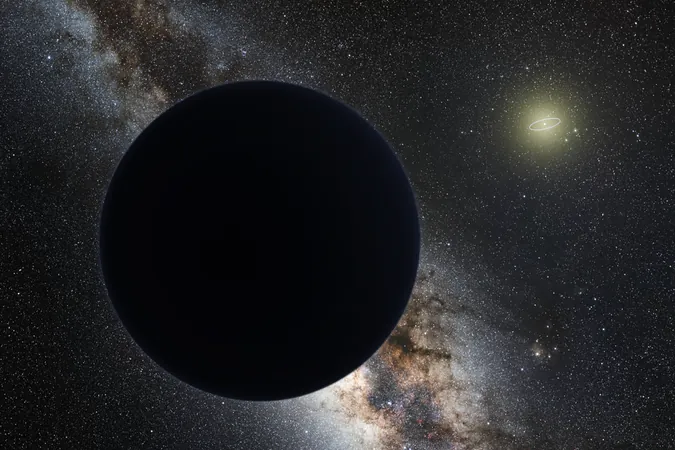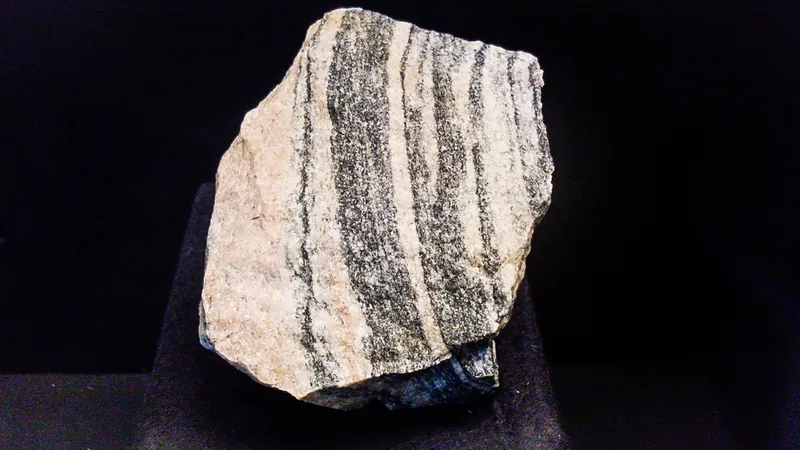
The Search for Planet X: Is a New Giant Planet About to Be Discovered?
2025-01-11
Author: Sophie
Introduction
In recent astronomical discussions, the possibility of a hidden world in our solar system has sparked excitement and debate. For nearly a decade, scientists have speculated about the existence of "Planet X" or "Planet Nine," a hypothetical giant planet that could be lurking in the fringes of the solar system. This elusive planet is thought to be responsible for the strange gravitational behaviors observed in trans-Neptunian objects (TNOs) far beyond Neptune, and researchers are on the brink of confirming its existence.
Recent Studies and Research Findings
Recent studies have intensified our quest to locate Planet X, involving a wider examination of TNOs, expanding the sample size from 11 to 51 observed objects. This research proposes that if Planet X does indeed exist, it would be approximately 4.4 times the mass of Earth and orbit at a staggering distance of around 300 times that of Earth from the Sun.
The Role of the Vera C. Rubin Observatory
The most significant news lies in the capabilities of the upcoming Vera C. Rubin Observatory's Legacy Survey of Space and Time (LSST) in Chile, set to commence operations at the end of 2025. Scientists like Amir Siraj from Princeton University assert that nearly all predictions for the hypothetical planet’s orbit fall within LSST’s field of view, making it highly likely that Planet X would be one of the first discoveries if it is real. The data gathered could also clarify whether the clustering of distant TNOs observed previously is indeed a genuine phenomenon or merely a statistical anomaly, paving the way for a major breakthrough in understanding our solar system.
Public Engagement in Naming the New Planet
In addition to the Planet X hunt, NASA has invited public engagement for names in case of its discovery—imagine the potential drama over naming rights! Speculations abound on whether it should be a traditional name, a quirky one, or something that captures its mysterious essence.
Pluto and Its Moon Charon
While we hold our breath for further revelations about Planet X, let’s pivot to Pluto. The dwarf planet and its moon Charon have long intrigued scientists. Recent research has proposed a fascinating "kiss-and-capture" model explaining their formation, suggesting that these celestial bodies may have once collided and temporarily fused before separating into their distinct forms. This theory not only enhances our understanding of the binary relationship between Pluto and Charon but also sheds light on the geological features found on both bodies today.
The Discovery of New Mollusk Species
On a more peculiar note, paleontological studies have identified new mollusk species from Silurian fossils dating back 430 million years. Named Punk and Emo, these ancient creatures offer a fun nod to modern music culture while showcasing the diverse evolutionary history of mollusks. As we delve into the past, these names remind us of the interconnectedness of life's history on Earth.
Conclusion
As we navigate through climate challenges, political unrest, and social injustices, the idea of discovering a new planet feels like a whimsical distraction we all crave. Whether it be a giant planet or a primordial black hole, the scientific community is brimming with anticipation. If bets were to be placed on the existence of Planet X, who wouldn’t want to put their confidence behind this much-anticipated discovery?
Ongoing Adventure in Understanding the Cosmos
In a world where nature constantly surprises us, the search for Planet X, the story of Pluto and Charon, and the revival of ancient species like Punk and Emo, ensures that our understanding of the cosmos remains an ongoing adventure worth following. Stay tuned as we wait to uncover the next monumental discoveries waiting just beyond our current view.









 Brasil (PT)
Brasil (PT)
 Canada (EN)
Canada (EN)
 Chile (ES)
Chile (ES)
 Česko (CS)
Česko (CS)
 대한민국 (KO)
대한민국 (KO)
 España (ES)
España (ES)
 France (FR)
France (FR)
 Hong Kong (EN)
Hong Kong (EN)
 Italia (IT)
Italia (IT)
 日本 (JA)
日本 (JA)
 Magyarország (HU)
Magyarország (HU)
 Norge (NO)
Norge (NO)
 Polska (PL)
Polska (PL)
 Schweiz (DE)
Schweiz (DE)
 Singapore (EN)
Singapore (EN)
 Sverige (SV)
Sverige (SV)
 Suomi (FI)
Suomi (FI)
 Türkiye (TR)
Türkiye (TR)
 الإمارات العربية المتحدة (AR)
الإمارات العربية المتحدة (AR)